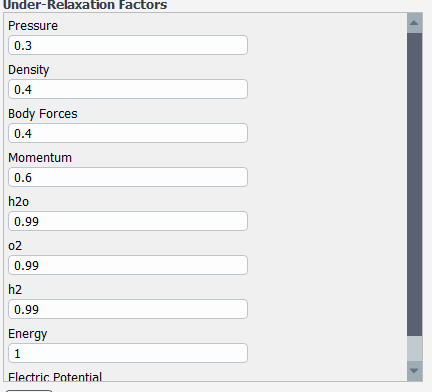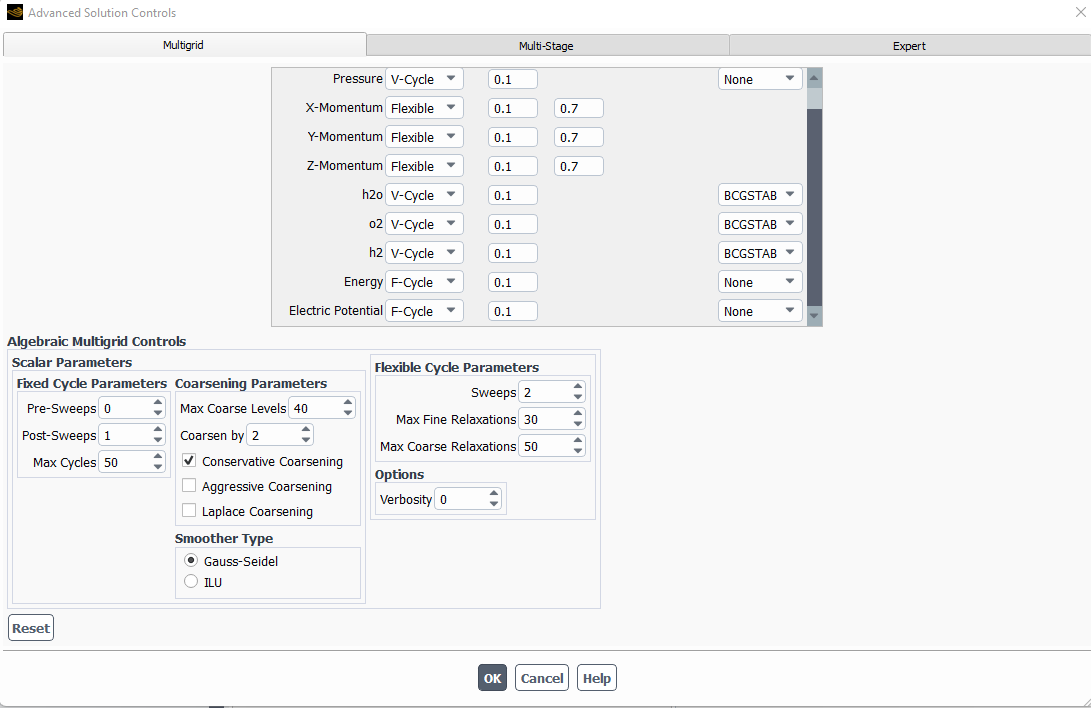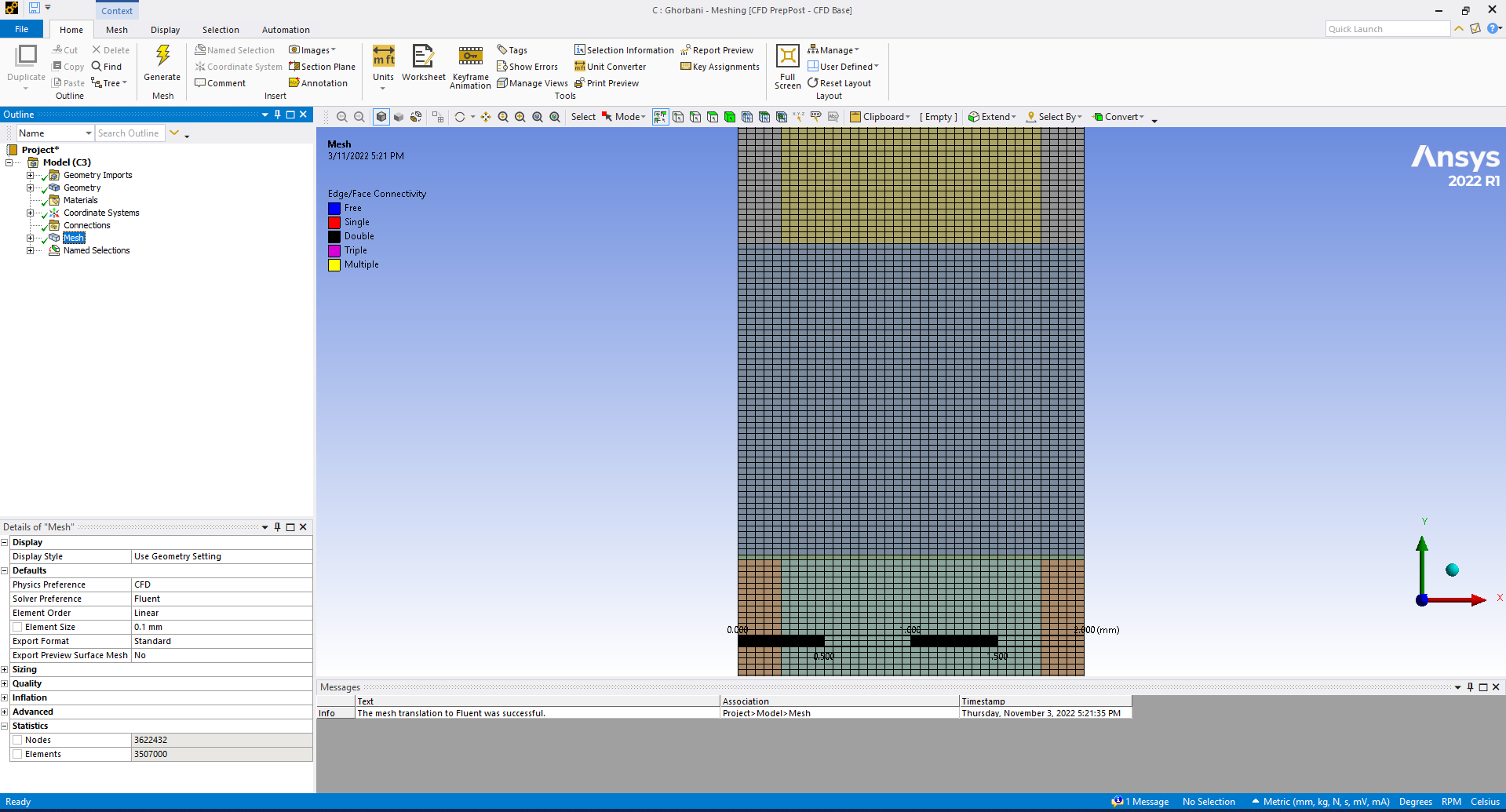TAGGED: ansys-cfd, floating-point-exception, fluid, sofc, species
-
-
November 3, 2022 at 9:20 am
lancer
SubscriberHi, I'm running a sofc module.
This is some I think is an important to let you know,
Type: Pressure-Based
Time: Steady
Velocity Formulation: Absolute
Energy > ON
Viscous>Laminar
Species Transport > ON
Boundary Condition = Co-Flow, Inlet, Temperature, Species
Under-Relaxation Factors
MESHING
How do I solve the floating exception problem.Divergence detected in AMG solver: species-2 Error at host: floating point Which part should I focus? The floating exception occur when reaches 10-20 Iteration.
-
December 14, 2022 at 12:56 pm
Aleksey Gerasimov
Ansys EmployeeHello Lancer,
There might be a number of reasons:
1) You have a nice hexahedral mesh, but the orthogonal quality drops down to 0.29. I cannot see the mesh distribution in the 3rd direction. I presume that you might have cell expansion in Z direction. If the orthogonal quality suffers, then I'd suspect that the bias has not been applied consistently on all edges, thus creating skewed cells that aren't visible from the outside. Please double check.
2) It is worth having some flow-development sections at inlets and outlets. The inlet relaxation section allows flow development before it reaches the active zone of the cells and thus avoiding sharp gradients there. The oultet flow relaxation sections are needed to limit the effects of a potential reversed flow that can create very sharp and unrealistic temperature and species gradients there.
3) The gas diffusion layers are very different in thickness. It is not unusual for them to be different, but I have never seen such a difference. However, the most important aspect there is that the thinnest layer is only 1-cell thick. The first near-electrolyte plane of cells in porous electrode is very source dominant area, Please consider having at least 3 cells across it.
4) When it comes to solver-settings, please remember that for segregated solver the energy, species and potential URFs need to be 1 at the end of the simulation, However, at the initial stages, if convergence is problematic, one can reduce these values temporarily to, say, 0.9 and then gradually increase them to 0.95, 0.98, 0.99 and finally to 1.
5) You can try turn F-cycle for all equations.
6) Proper initialization and even a simulation of the flow in the cell without electrochemical reactions is a good practice.
7) In the initial stages of the simulation, you can temporarily turn off "Enable Volumetric Energy Source" & "Enable Surface Energy Source" model options in the SOFC panel.
8) Please consider running potetiostatic boundary conditions (prescribed voltage) instead of galvanostatic boundary conditions (prescribed current) and start with high voltage (low current) and gradually decrease voltage (increase current) in order to reconstruct the polarization curve. For lower voltage simulation, please consider using the preceeding simulation at higher voltage as an initial guess.
Hope this helps and best regards,
Aleksey.
-
- The topic ‘Divergence detected in AMG solver: species-2 Error at host: floating point’ is closed to new replies.


- air flow in and out of computer case
- Varying Bond model parameters to mimic soil particle cohesion/stiction
- Eroded Mass due to Erosion of Soil Particles by Fluids
- I am doing a corona simulation. But particles are not spreading.
- Guidance needed for Conjugate Heat Transfer Analysis for a 3s3p Li-ion Battery
- Centrifugal Fan Analysis for Determination of Characteristic Curve
- Issue to compile a UDF in ANSYS Fluent
- JACOBI Convergence Issue in ANSYS AQWA
- affinity not set
- Resuming SAG Mill Simulation with New Particle Batch in Rocky

-
3882
-
1414
-
1241
-
1118
-
1015

© 2025 Copyright ANSYS, Inc. All rights reserved.













